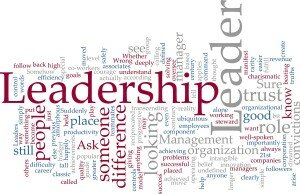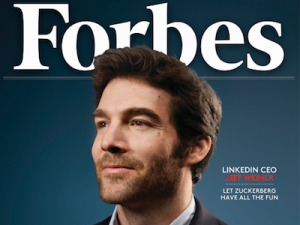Having a great idea is one thing, but taking that idea from the notebook to the real world is another. And sometimes all that’s needed to bring a seemingly impossible concept to life is a person to step forward and take control.
What is a Leader?
A leader is someone who takes the highest role of authority within a group or organization.
A good leader is someone who organizes the success of a group by consistently ensuring performance is up to standard.
You’ll note the words ‘good’ and ‘success’ are highlighted here.
This is because the only difference between a successful team and a non-successful team, a dreamer and an entrepreneur, an idea and a product/ company/ nationwide change is direction. And its direction that takes an individual from a person in a high role of authority, to a successful leader.

Anyone can be a good leader, whatever your age, whoever your leading, whatever the size or capability of your team. The only aspect that is required of you is a vision and an ambition to succeed. In having both of these elements, which I’m sure you do, there is no reason as to why you couldn’t lead a team successfully.
So what makes a Leader a Great One? Introducing the C.O.P formula…
Because there is no definite answer to what a great leader is, I’ve designed a simple acrostic that demonstrates the three main styles of successful leadership C, O and P and a list of traits that I believed all good leaders should carry.

COP is loosely based on research completed by leading psychologist Kurt Lewin in 1939, who observed multiple leaders in action and concluded that people in charge of teams, are usually either ‘Democratic’, ‘Authoritarian’ or ‘Delagative’ in their approach
However, because these styles were purely based on observation, they each had their own flaws. (For example, The Democratic approach, although allowed for a more quality product to be made; was often less productive than a team under an Authoritarian leader.)
What I aimed to do with COP was to select the best elements from each style.
C) Control, Confidence, Communication, Co-operation
Loosely based on THE DEMOCRATIC APPROACH this style of leadership focuses on you developing a team that is participative and has a major and evenly distributed input into the decision making process.
By providing guidance for the people beneath you, but retaining final say, you are allowing for your product to be made, be it a book or a business, of a higher and more creative quality than the same idea being worked on by a team beneath other leadership styles.
If you want to channel the ’Democratic’ aspect of leadership, a good method to use is group discussion. But remember, this will only work as long as you, the leader, can keep firm control over the final decision making process. Only then can you be sure that the Democratic approach will not affect productivity levels.
O) Organized, Openly critical, Open minded
This style of leadership took inspiration from Lewin’s AUTHORITARIAN APPROACH. The Authoritarian Approach applies to a leader who takes full responsibility for the actions of their team and forms specific commands of the people below him.
This style of leadership is most useful when you, the leader, are the most knowledgeable member of the team because it relies on your team being fully obedient to your commands.
If you want to control an ‘Authoritarian’ team it’s a good idea to form a very specific strategy, agenda and plan for the actions of the people beneath you. As long as you stay open minded, this style of leadership should not limit creativity.
P) Perseverance, Proactive, Positivity
This final style of leadership reflects the DELATAGTIVE APPROACH an approach designed to allow the team to work without the leader; but in his vision.
In this style of leadership, you are required to encourage, motivate and bring a system of organization to the team. This form of leadership is effective as long as the team is kept motivated. This can be done by taking pro-active steps towards keeping the team positive. Usually, I would not recommend displaying these traits alone unless your in charge of multiple teams, but pro-activity is always a valuable skill for a leader to have because it ensures that your team will want to work to their best ability.
Three Great Leaders: C.O.P’s that we all admire…
Jeff Weiner: Control, Confidence, Communication, Co-operation
 To be a great leader, you have to have a great team. But what’s the point in having a great team if you’re not going to listen to them? Jeff Weiner CEO of Linked In a good example of a COP because he talks to his team members one to one.
To be a great leader, you have to have a great team. But what’s the point in having a great team if you’re not going to listen to them? Jeff Weiner CEO of Linked In a good example of a COP because he talks to his team members one to one.
One of the best ways to gain control of a team is by listening to the people you want to work with you. So be confident and always take the time to understand what other people think about the task at hand.
Steve Jobs: Organised, Openly critical, Open minded
 Steve Jobs could be considered by many people as quite a complex leader, and certainly not the most co-operative, but he had a control within the Apple Company that you can’t help but admire.
Steve Jobs could be considered by many people as quite a complex leader, and certainly not the most co-operative, but he had a control within the Apple Company that you can’t help but admire.
Because of the excellence he demanded of his staff, and the honest criticsm he gave to them, his team were determined to work to the best of their abilities. This worked in Jobs favor because he could be sure that his team would stick to strict agendas and organization. With this ability, dedication and control Jobs knew that only the most dedicated and loyal team members would be able to cope.
In this sense the Authoritarian approach is the only approach that means ideas will always be executed to the best of qualities and constantly moving with the times, which is important particularly for any kind of business idea.
More on Steve Jobs: His Life & Lessons
Nelson Mandela: Perseverance, Proactive, Positivity
You don’t need me to tell you that Nelson Mandela was a brilliant leader.

Because of his pro-active steps towards changing the future, he abolished Apartheid and made drastic changes to the overly racism South-African nation. But he didn’t do this alone. He did all this by spreading his positivism towards the future, through the people below him. And in persevering with the troubles these changes caused, he was able to make changes that other people could only have dreamt of.
What we can conclude from Mandela’s leadership here is that a good leader is pro active towards the future. A good leader truly believes that they could make a difference. And a good leader needs people on side to make things work.
More on Nelson Mandela: His Life & Lessons
Striking a Balance: Believing, Knowing and Taking responsibility for your team…
Becoming a great leader is not about finding a style, following a formula or even becoming a C, O, P. Being a great leader is about being the best you, you can be to suit the task at hand.
It’s about trying your hardest to be all of these things mentioned, in your own way.
By dictionary definition, a leader is “person who leads or commands a group, organization, or country” but the truth is that all of these apply, outside the team as well because you are the leader of your own life. And if the difference between a leader and a successful leader is understanding and being responsible for your team, then the difference between an ordinary person and a successful person must be the same. Except the team, in this case, is you.
Idols like Nelson Mandela’s influence stretched further, even, than a company. He changed the world.
But similar techniques of positivism can be applied to any team, whether it’s a team trying to change the world or create a new product. The truth is that if you believe in what you’re doing, you are already one step of the way.
Wrote by Aimee Hall




